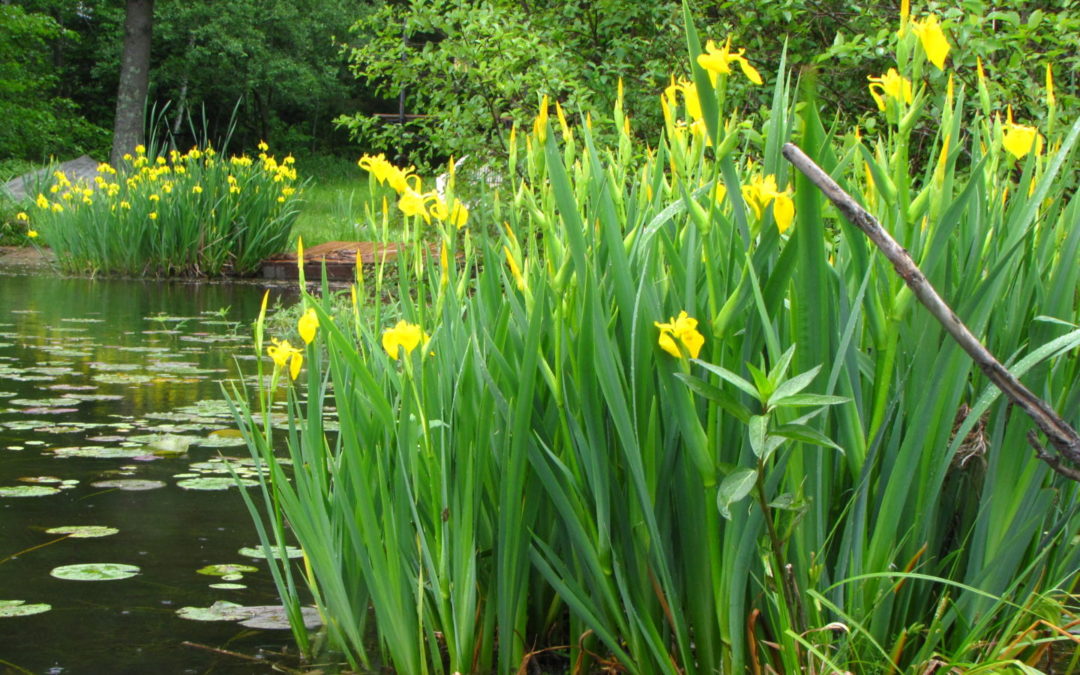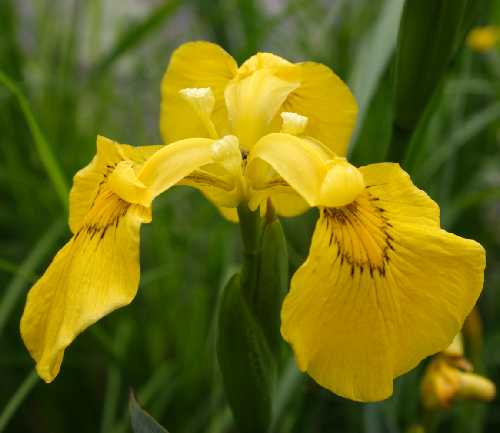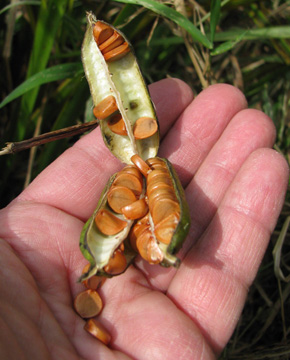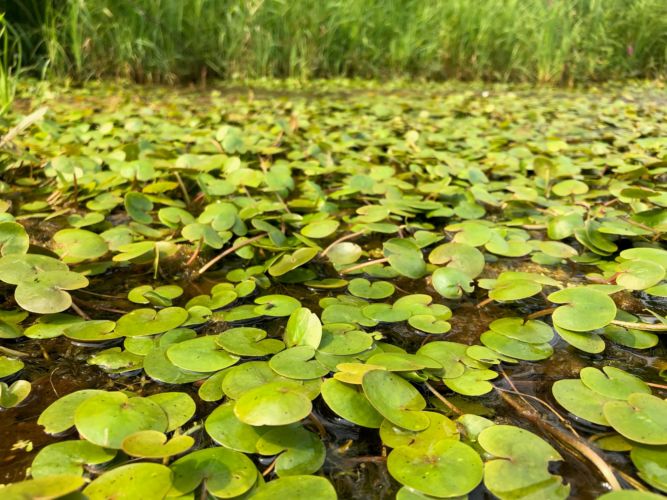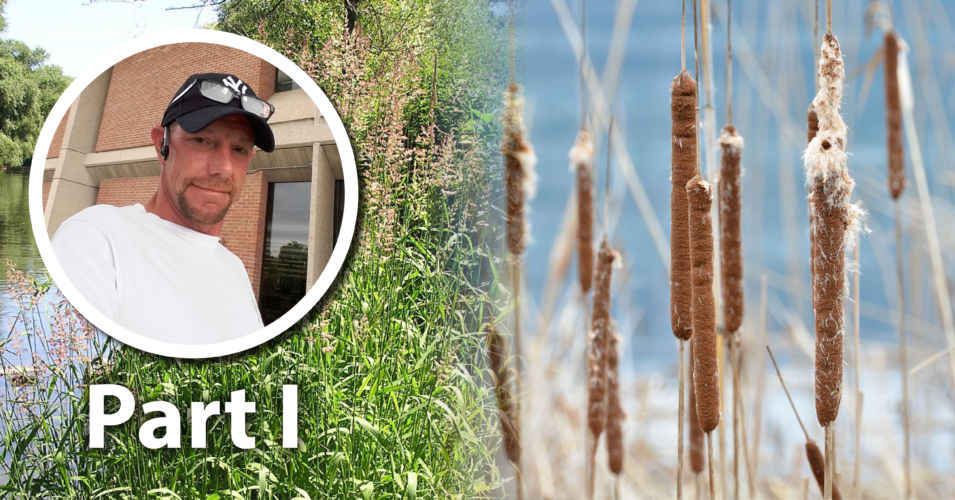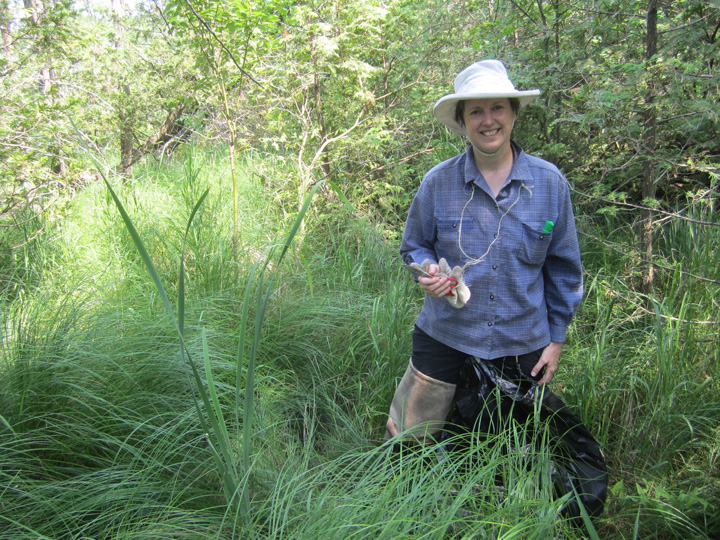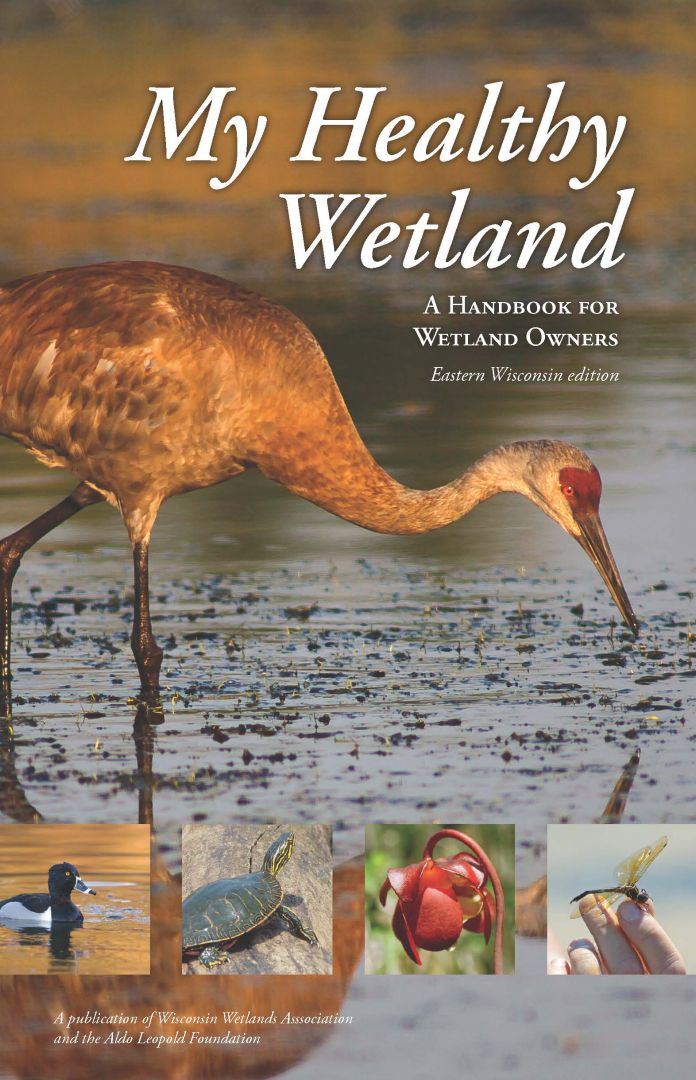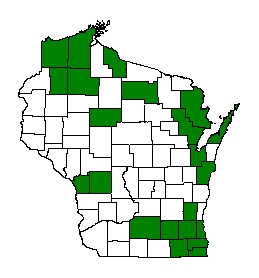
The counties highlighted in green are the Wisconsin counties where yellow flag iris has been documented (data as of 2013).
Yellow flag iris is a showy perennial invasive plant that grows in wetlands and on floating aquatic mats. It forms very dense mats of rhizomes and crowds out native plant species.
A native plant of Eurasia, yellow flag iris is thought to have been introduced here as an ornamental plant. It can also escape from garden environments. It is found in counties all around Wisconsin and is a restricted invasive species, meaning that it is illegal to transport, transfer, and introduce the plant.
When not flowering, yellow flag iris might be confused with the native blue flag iris (Iris versicolor) or other wetland plants such as cattails (Typha spp.) or sweet flag (Acorus spp.) with sword-shaped, upright leaves. Blue flag iris generally is smaller than yellow flag iris and it does not tend to form dense clumps.
Once the flowers are out, however, yellow flag iris is unmistakable, as it is the only yellow iris in this region. The flowers can range in color from almost white to a vibrant dark yellow. Flowers are between 3-4 inches wide and bloom from April to June.
Each 6-angled seed pod is about 2-4 inches long and can produce more than 100 seeds that start pale before turning dark brown. Each seed has a hard outer casing with a small air space underneath that allows the seeds to float.
Yellow flag iris can spread both by seed and by rhizome: the thick, fleshy pink-colored roots can form thick mats that can float on the surface of water.
Yellow iris is poisonous to humans and animals if eaten, and its sap can cause skin irritation.
Small populations of yellow flag iris can be manually removed. Be sure to wear gloves and long sleeves, as the sap of the plant may cause skin irritation. All parts of the plants must be removed, especially the rhizomes. Cutting flower heads may help prevent the plants from spreading as quickly. Aquatic herbicides may be effective at controlling yellow flag iris, but typically herbicide use in aquatic environments requires a permit, so check with your local DNR office.
If you believe you have yellow flag iris growing in your area, contact the Wisconsin DNR to report it.
Photo by Paul Skawinski.
Related Content
New wetland invasive plant discovered in Wisconsin: European frog-bit
Learn about another invasive plant in Wisconsin that grows in shallow, quiet, or slow-moving water.
Wetland Coffee Break: Toward more effective invasive species management: Part 1
Caring for wetlands by mapping invasive plants

